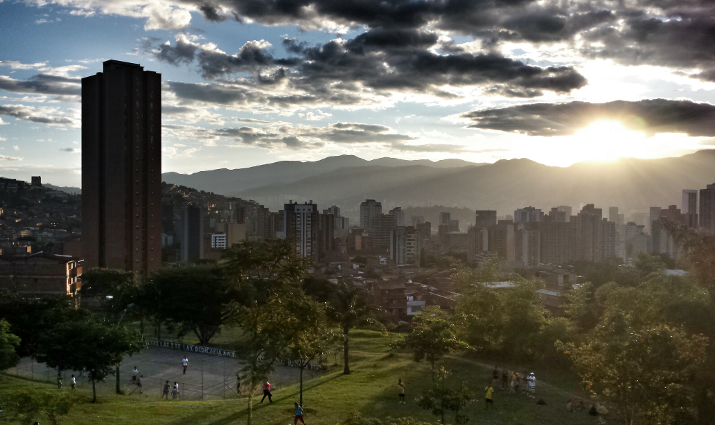
While Colombia works to end the civil war, life has already become much safer in the city Medellín. Bringing peace to the whole country will be a big test of the global goal to create a peaceful future for all.
During the nineties, the second biggest city in Colombia was ravaged by crime and deadly violence. More than 6000 people were killed in the city of Medellín in 1991 alone. That’s more people killed than in the whole of Afghanistan in 2015. Medellín was ranked as the world’s most dangerous city. But then in 1993, the infamous drug kingpin Pablo Escobar was tracked down and killed by police, shattering his crime syndicate. Since then, the city has gradually become much more peaceful.
NO LONGER ON THE LIST OF THE WORST
After many years of fighting organised crime, the annual number of homicides in Medellín has now dropped to less than 500. That is comparable with several cities in the USA, according to the Brookings Institution. The decrease in homicides has even happened while the number of people in the city has increased to 2.5 million inhabitants. This means that the number of homicides per 100.000 people has dropped by 95 percent. Medellín is therefore no longer on the top of the list of the world’s most dangerous cities. In fact, this year the city dropped out of the list completely.
FROM BOMBS TO PICKPOCKETS
Margarita Castaño Echavarría is 56 years old and has lived in Medellín all her life. She has noticed things have changed:
“Life has improved, both here in this city and in the country generally. In the nineties we were always afraid of walking on the streets, because a bomb could go off at any moment. Almost no foreigners dared visit Colombia either. But now we see more and more tourists, and we also see that more foreign companies invest and set up their offices here in this city,” says Margarita Castaño and adds:
“The drug cartels still exist, but they are hiding away with their money, and they are no longer visible in the streets. Now it’s mostly just pickpockets that I’m afraid of in this city”.
Despite the progress in Medellín, there are ongoing problems with crime and violence in many parts of Colombia. Much of it is related to the drug trade and not least the civil war that has ravaged the country for more than half a century.
STILL HOPE FOR LASTING PEACE
After years of negotiations, the Colombian government recently signed a peace agreement with the biggest armed group, known as the FARC. However, this deal was narrowly rejected in a referendum, with 50.2 percent voting against it. Many opponents of the deal say they are not against ending the war. Instead, they voted no because they think the specific agreement is too soft on the FARC. As part of the proposed deal, some guerrilla leaders would become politicians, and FARC soldiers would be given milder sentences if they confess to crimes committed during the war.
A BIG TEST OF WORLD LEADERSHIP
Even though the referendum resulted in a no, the Colombian government and the FARC have agreed to uphold the ceasefire and continue to work towards peace by adjusting the deal. In recognition of the efforts to end the war, the Colombian president Juan Miguel Santos was awarded the 2016 Nobel Peace Prize, and the United Nations continue to strongly support peace in Colombia. The UN has established a mission in the country to monitor the ceasefire and coordinate the disarming process.
All this happens on the backdrop of the new UN Global Goals. Last year, the nations of the world agreed to work together to solve 17 of the world’s biggest challenges, and one of the most important of these goals is to promote peace, justice, and strong institutions in countries all over the world. Ending the Colombian civil war will be an important test of the world’s ability to balance the need for peace with the need for justice.
source: worldsbestnews.org

